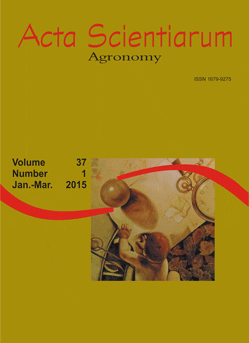<b>Biological control of phytophagous arthropods in the physic nut tree <i>Jatropha curcas</i> L. in Brazil
Resumo
Jatropha curcas has a high biofuel oil content, which could replace polluting fuels, and has great potential for large scale monoculture cultivation in the conventional system. We explored the occurrence, spatial distribution and the functional response of the main phytophagous species of this plant and their natural enemies to explore the potential for conservative biological control. We began sampling phytophagous species and predators when J. curcas plants were six months old. The most common species of phytophagous insects were nymphs and adults of Empoasca kraemeri, followed by Frankliniella schultzei and Myzus persicae. Among the predators, Ricoseius loxocheles, Iphiseioides zuluagai, Araneidae, larvae and adults of Psyllobora vigintimaculata and Anthicus sp. were the most frequently encountered. The most common parasitoids were the families Encyrtidae and Braconidae. The highest densities of E. kraemeri and F. schultzei on the edges of the J. curcas crop follow spatial patterns similar to those of their natural enemies I. zuluagai and Anthicus sp. These arthropods can be considered efficient predators of immature stages of E. kraemeri and F. schultzei on J. curcas.
Downloads
DECLARAÇÃO DE ORIGINALIDADE E DIREITOS AUTORAIS
Declaro que o presente artigo é original, não tendo sido submetido à publicação em qualquer outro periódico nacional ou internacional, quer seja em parte ou em sua totalidade.
Os direitos autorais pertencem exclusivamente aos autores. Os direitos de licenciamento utilizados pelo periódico é a licença Creative Commons Attribution 4.0 (CC BY 4.0): são permitidos o compartilhamento (cópia e distribuição do material em qualqer meio ou formato) e adaptação (remix, transformação e criação de material a partir do conteúdo assim licenciado para quaisquer fins, inclusive comerciais.
Recomenda-se a leitura desse link para maiores informações sobre o tema: fornecimento de créditos e referências de forma correta, entre outros detalhes cruciais para uso adequado do material licenciado.




















































